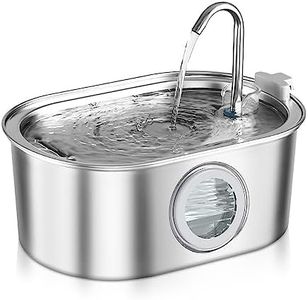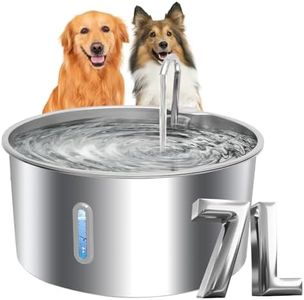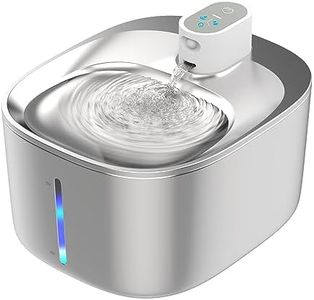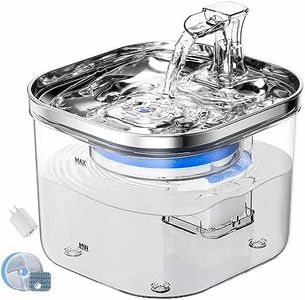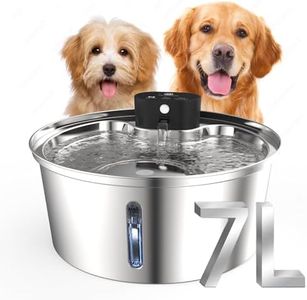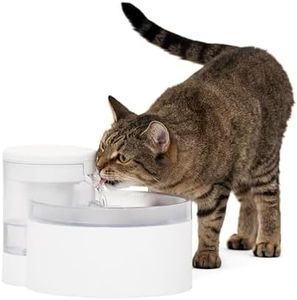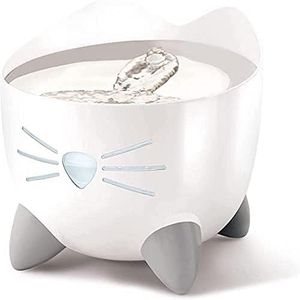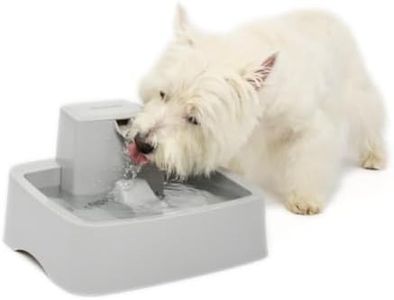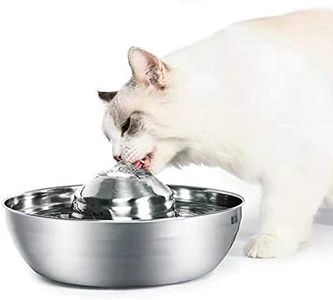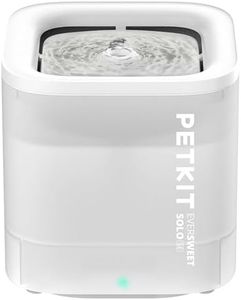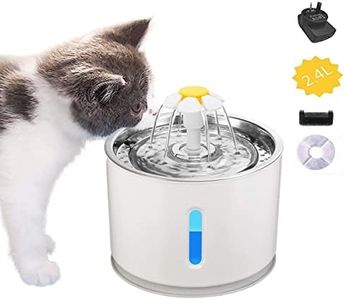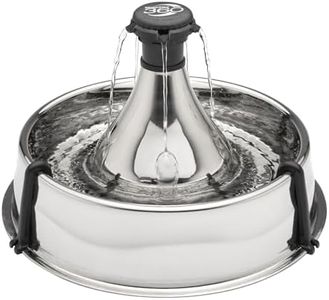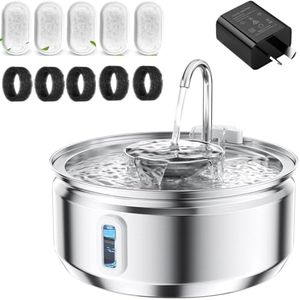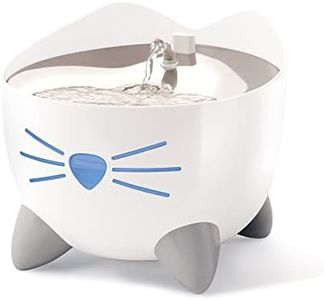We Use CookiesWe use cookies to enhance the security, performance,
functionality and for analytical and promotional activities. By continuing to browse this site you
are agreeing to our privacy policy
10 Best Pet Fountains
From leading brands and best sellers available on the web.Buying Guide for the Best Pet Fountains
Choosing the right pet fountain can make a big difference to your pet’s hydration and health. A pet fountain provides running water, which many pets prefer over still water because it stays fresher and is more appealing. When shopping for a pet fountain, think about your pet’s size, how many pets will use it, and your own cleaning habits. Considering the main features and understanding why they matter will help you choose a fountain that suits both you and your pet’s needs for daily use.CapacityCapacity refers to how much water the fountain can hold at one time. This is important because a larger reservoir means you won’t have to refill it as often, which is useful if you have multiple pets or large breeds. Small fountains (under 1 liter) are suitable for a single small pet or if you’re home often to refill. Medium (1-2 liters) suits most average households with one or two pets. Larger fountains (over 2 liters) are ideal for multi-pet homes or big dogs. Estimate your pets’ daily water needs and pick a capacity that means you’re comfortable with the refilling schedule.
Filtration SystemThe filtration system ensures the water stays clean and fresh by removing debris, hair, and reducing odors. Most fountains use carbon or charcoal filters, sometimes combined with foam filters to catch larger particles. Some offer multi-stage filtration for extra cleanliness. For pets that are sensitive or have health concerns, a better filtration system is helpful. If your tap water is already clean or you have pets with no special needs, a basic filter should be enough, but if water quality is a worry or your pet is fussy, a more advanced system is worth considering.
MaterialPet fountains are usually made of plastic, stainless steel, or ceramic. Plastic is lightweight and affordable but can develop scratches that harbor bacteria if not cleaned regularly. Stainless steel and ceramic are more durable and hygienic, often preferred for pets with allergies or sensitive skin, though they’re heavier and sometimes pricier. If your pet is prone to acne or you want easier cleaning, lean towards stainless steel or ceramic. For those prioritizing lightweight or colorful designs, plastic may be appealing as long as you clean it thoroughly.
Noise LevelNoise level reflects how much sound the fountain’s pump and water flow make. Some pets (and owners) are sensitive to noise; loud fountains can scare shy animals or be disruptive at night. Generally, quieter models use better pumps and smoother water flow. If your pet is anxious or your fountain is near sleeping areas, look for a quiet or whisper-quiet fountain. For pets comfortable with new sounds or if it sits in a busy area, a little noise won’t be a problem.
Ease of CleaningCleaning is key because a dirty fountain can harm your pet’s health. Some fountains have many small parts or awkward shapes that make cleaning harder. Simpler designs with fewer crevices are easier to keep clean. If you want the least hassle, choose a model where most parts are dishwasher-safe and easy to disassemble. If you’re diligent about hand-washing or don’t mind a deeper clean sometimes, a more elaborate style might be fine.
Flow SettingsFlow settings refer to how much you can control the speed or shape of the water stream. Some fountains offer adjustable flows or multiple spouts, allowing you to cater to your pets’ preferences—some like a gentle trickle, others a bubbling stream. If you have a picky pet or multiple types of pets (like cats and dogs), adjustable flow can help you find a setting that encourages everyone to drink more. If your pet isn’t fussy, one fixed flow could be simpler and easier to manage.
